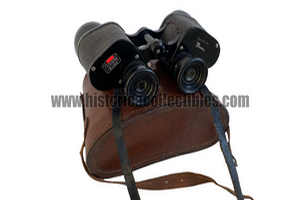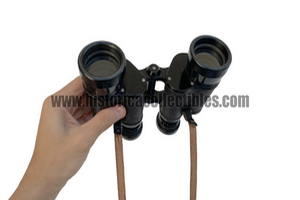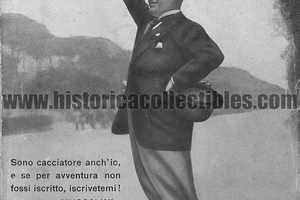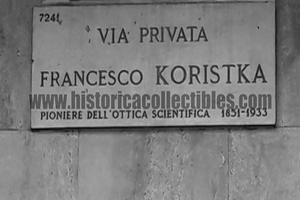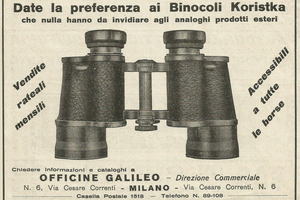Binoculars Wide Angle 6x40 Model DIANA, F. Koristka, around 1927
Binoculars 6x40 Wide Angle model "DIANA", made by F. Koristka around 1927, whose name is inspired by the Roman goddess of hunting, Diana.
This model of binoculars differs structurally from any other model in that, in addition to its shape, it is only partially covered in leather.
On the left ocular plate there is the F.lli Koristka Milano trademark as well as the serial number, while on the right ocular plate there are technical information such as model "Diana" and magnifications "6x40 mm".
It is fascinating to hypothesize that these binoculars were commissioned by Diana magazine to be destined for the illustrious personalities who made themselves available for interviews and stories every week.
The binoculars are extremely robust and compact, the view is excellent and perfectly collimated and all mechanisms work perfectly.
History of Koristka:
Francesco Koristka, of Polish origin (Silesian to be precise), after having worked in Vienna and being Salmoiraghi's assistant, set up his own business and founded it in Milan in 1881 (1880 is reported almost everywhere but in an old Koristka advertisement I found clearly written: F. Koristka S.A. (House founded in 1881) a company, Ottica Meccanica Flli. Koristka. It soon became one of the most important and appreciated producers of optical instruments (binoculars and microscopes), standing out for the high quality of the lenses mounted on their products.
During the First World War it produced binoculars intended for officers of the Royal Navy: the "Marenostrum". It also became the most important company in Italy for the construction of microscopes and one of the few Italian precision industries that exported both to Europe and America.
Thanks to his relationships with Ernst Abbe (1840-1905), Koristka had the opportunity to build microscopes and photographic lenses by exploiting the patents of the Zeiss company in the same way as Krauss worked in Paris, but he also built lenses with original designs such as the telephoto lens Negri-Koristka, and subsequently the Ars, the Sideran, the Sagittal, the Meridian and the Proximar telephoto lens. In 1929 the F.lli Koristka company was absorbed by Officine Galileo Firenze, but continued to produce under its own brands for a few decades.

